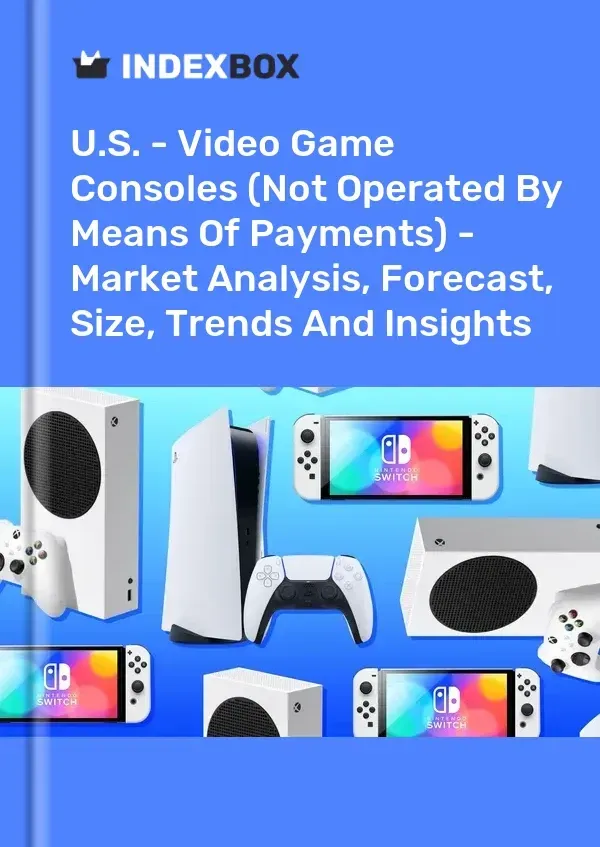The current landscape of US video game console tariffs poses a significant challenge for gamers and manufacturers alike. As the Trump tariffs loom over the tech industry, estimates suggest that prices for video game consoles could surge by nearly 69%, drastically altering the affordability for US consumers. With the average console price projected to reach around $428, many are left wondering how this will impact upcoming products like the anticipated Nintendo Switch 2. The Consumer Technology Association warns that these tariff rates, especially on consoles predominantly imported from China, could spark a major economic disruption, leading to decreased imports and spending cuts. As gamers hold their breath, the implications of these tariffs extend beyond prices, echoing throughout the broader US tech goods market.
Navigating the intricacies of import duties on gaming systems reveals a looming crisis for players and developers alike. As the US government considers implementing significant tariffs on imported consoles, industry analysts fear that the affordability of next-gen models, including the highly awaited Nintendo Switch 2, will be at risk. Projections indicate that consumers may see steep increases in retail pricing due to these duties, which could lead to broader economic repercussions in the tech sector. The situation prompts critical discussions around how such tariffs impact not just console prices but also the overall dynamics of consumer spending in the gaming market. This ongoing issue highlights the delicate balance between trade policy and consumer technology, shaping the future of gaming in America.
Impact of Trump Tariffs on Video Game Console Prices
The implementation of the Trump tariffs has raised significant concerns within the gaming community and among industry experts about potential price hikes for video game consoles. According to a recent report by the Consumer Technology Association, video game consoles could see an increase in prices by as much as 69% if current tariff proposals materialize. This kind of increase would push the average console price close to $428, which is a steep jump that could alienate millions of American gamers.
As the majority of video game consoles are imported from overseas, particularly from China, the heightened tariffs—potentially surpassing 145%—could drastically affect not only prices but also the availability of these popular devices. The Trade Partnership Worldwide report highlights that such tariffs could lead to a decrease in imports by 71%, which inevitably would tighten supply and further escalate prices. These factors combine to create an alarming scenario for consumers and the gaming industry as a whole.
US Trade Organization’s Warning on Tech Goods Tariffs
The ongoing trade dispute has prompted warnings from various US trade organizations, including the Consumer Technology Association, which advises that tariffs on tech goods could severely disrupt the market. Under the current proposals, tech products ranging from smartphones to game consoles are set to incur hefty tariffs that can increase their price significantly. This situation poses a risk to both developers and consumers, as a projected $10.4 billion reduction in the overall US economy from these tariffs could lead to diminished consumer spending.
With the tariffs primarily affecting imports from China, the CTA’s revised estimates reflect an eagerness among industry advocates to prevent the implementation of such tariffs. The potential economic ramifications could lead to lower consumer confidence and spending, meaning that even if products like the upcoming Nintendo Switch 2 are launched, they may not be as successful if priced out of reach for the average consumer.
Nintendo Switch 2 and Tariff Impact on Pre-Orders
Despite the looming tariffs, anticipation for the Nintendo Switch 2 remains high among fans, with millions already expressing interest through pre-orders. However, the confusion surrounding the tariffs has led to delays in these pre-orders across the US market. As the tariff situation evolves, Nintendo remains cautiously optimistic about the Switch 2’s launch date, still set for June 5, emphasizing their commitment to delivering a quality gaming experience amid financial uncertainty affecting tech goods.
Retailers and consumers alike are grappling with the prospect of increased prices, which could hamper the console’s initial sales. Analysts suggest that murky economic conditions and elevated prices could result in a significant drop in consumer spending. The final quarter of 2025 may be crucial as gamers weigh their options; they could either choose to invest in the new console or hold off, hoping to see lower prices in the face of potential tariff changes.
Tariffs’ Influence on the Gaming Industry Economy
The economic landscape of the gaming industry is intricately tied to external factors such as tariffs, which could reshape consumer behavior and business practices. If the proposed Trump tariffs are enacted and video game console prices surge, the gaming industry might experience not only reduced sales but also a significant hiccup in innovation and product development. A potential $12 billion cut in consumer spending emphasizes how crucial affordability is to gamers, particularly when facing rising costs of living.
Moreover, the changes in pricing strategies among console manufacturers could lead to a shift in market dynamics. Companies might need to evaluate alternative supply chains to mitigate the potential impact of tariffs on costs and pricing. Understanding these developments is crucial for stakeholders and consumers as they navigate a turbulent period that may redefine the gaming experience in America.
Future of Video Game Consoles Amid Tariffs
As industry experts consider the long-term effects of tariffs on video game consoles, speculation abounds regarding future pricing strategies and market adaptations. Depending on whether tariffs are sustained or lifted, manufacturers may be forced to rethink their entire approach to product development and launch. This prevalence of uncertainty could ultimately lead to innovatively designed consoles that prioritize cost-efficiency while maintaining performance and user accessibility.
In light of the impending tariffs, consumers and manufacturers must brace for possible shifts in the gaming console landscape. The upcoming months will not only determine the fate of launches like the Nintendo Switch 2 but could also dictate the strategies of major players within the tech industry, where fluctuating costs make price prediction increasingly challenging.
Long-Term Consequences for US Tech Goods
The implications of the Trump tariffs reach beyond just immediate price hikes; they pose long-term consequences for the entire US tech goods industry. As companies initiate supply chain adjustments to cope with tariffs, there may be a fundamental restructuring in how tech goods are sourced, produced, and sold. This shift could lead to increased domestic production and innovation but at a potential cost of higher prices in the interim.
Consumers may find themselves at the center of this transition, facing higher prices for not just video game consoles but a wide array of tech gadgets. As the Consumer Technology Association predicts steep price increases, awareness around these developments becomes vital for the average consumer trying to navigate the ever-evolving landscape of US tech goods.
Gaming Community Reactions to Tariff Changes
The gaming community has voiced its frustrations and concerns regarding the prospective impact of tariffs on console pricing. With social media platforms buzzing with discussions about affordability and the likelihood of price hikes, gamers are left to wonder how these tariffs will affect their purchasing decisions. The anxiety over increased costs may also deter pre-orders, leading to potential sales volatility.
Community forums have observed that the introduction of higher tariffs could not only dampen excitement for upcoming releases like the Nintendo Switch 2 but could also insulate a more significant divide in the gaming community based on economic circumstances—where certain players forge ahead while others may be left behind due to prohibitive pricing.
Navigating the New Economic Climate for Gamers
In the face of rising prices due to tariffs, gamers are left navigating a new economic climate that demands both flexibility and strategic thinking. Whether it’s diverting funds from other entertainment expenses or making choices based on counsel from community forums, the decision to purchase next-gen consoles has never been more complicated. Making informed decisions on gaming preferences will be paramount as consumers assess their financial situations in light of these changes.
However, the loyalty of the gamer community may shine as a beacon of resilience through this turmoil. While prices are set to rise, debates on budget optimization and alternative investment in gaming accessories could influence the methods through which gamers adapt to this new era defined by economic constraints.
Future of Tariffs and Their Impact on Innovation
As industry experts continue to predict the long-term implications of current tariffs, many are expressing concerns about stifling innovation within the gaming sector. The interplay between tariffs and technological advancement is crucial; as prices increase, so too may the hesitance of developers and manufacturers to take risks on new products that may lead to higher costs.
Companies may face pressure to innovate while navigating these challenging waters, leading to a potential slowdown in the introduction of groundbreaking technology. As consumer expectations rise, the industry must find a strategy that balances tariff pressures with an ongoing commitment to progress and high-quality gaming experiences.
Frequently Asked Questions
How will US video game console tariffs affect prices for gamers?
The proposed US video game console tariffs could lead to a price increase of up to 69.4%, raising the average console price to approximately $428. This significant hike is driven by tariffs on imported consoles, primarily from China, which constitute 87% of the market.
What are the Trump tariffs, and how do they impact video game console costs?
The Trump tariffs refer to trade duties that could impose a 145% tax on video game consoles imported from China. These tariffs, if enacted, are projected to substantially increase retail prices, affecting both consumers and the overall economy.
What is the expected impact of tariffs on the Nintendo Switch 2 launch?
The ongoing tariff situation has led to pre-orders for the Nintendo Switch 2 being postponed in the US. Despite this, Nintendo maintains the console’s launch date of June 5, which could still be affected by rising import costs due to the tariffs.
How might consumer spending be affected by US tariffs on video game consoles?
Analysts predict that the implementation of US tariffs on video game consoles could trigger consumer spending cuts of up to 73%, amounting to roughly $12 billion. This reduction in spending is attributed to higher console prices leading to decreased demand.
What is the role of the Consumer Technology Association regarding tariffs on US tech goods?
The Consumer Technology Association (CTA) has reported that tech goods, including video game consoles, may see price increases due to current tariff proposals. Their analysis outlines potential economic impacts, helping to inform consumers and policymakers about the ramifications of these tariffs.
| Key Point | Details |
|---|---|
| Potential Price Increase | US players could see a price increase of up to 69% on video game consoles due to current Trump tariff proposals. |
| Estimated Console Price | The average console price could rise to about $428. |
| Impact on Economy | A potential $10.4 billion annual reduction in the US economy could result from these tariffs. |
| Tariff Rates | Video game consoles could face tariffs as high as 145%, particularly affecting imports from China. |
| Import and Spend Forecast | Predicted 71% drop in imports and a potential 73% cut in consumer spending, amounting to around $12 billion. |
| Switch 2 Pre-orders | Pre-orders for the Nintendo Switch 2 have been postponed due to tariff uncertainties. |
| Nintendo’s Financial Outlook | Nintendo reported a decline in net sales as they prepare for the Switch 2 launch amid tariff concerns. |
Summary
US video game console tariffs are poised to significantly impact both prices and the broader economy if implemented. The Consumer Technology Association warns that consoles could see price hikes of up to 69%, with projections indicating an average console price reaching approximately $428. This economic strain could potentially lead to a staggering $10.4 billion decrease in the US economy, alongside dramatic reductions in imports and consumer spending. As the gaming industry navigates these uncertainties, the anticipated release of the Nintendo Switch 2 illustrates the immediate effects of these tariff proposals, potentially reshaping the market landscape for gaming enthusiasts.



